How to Build a Thoughtful Dia de los Muertos Ofrenda
Updated: Sep. 13, 2023
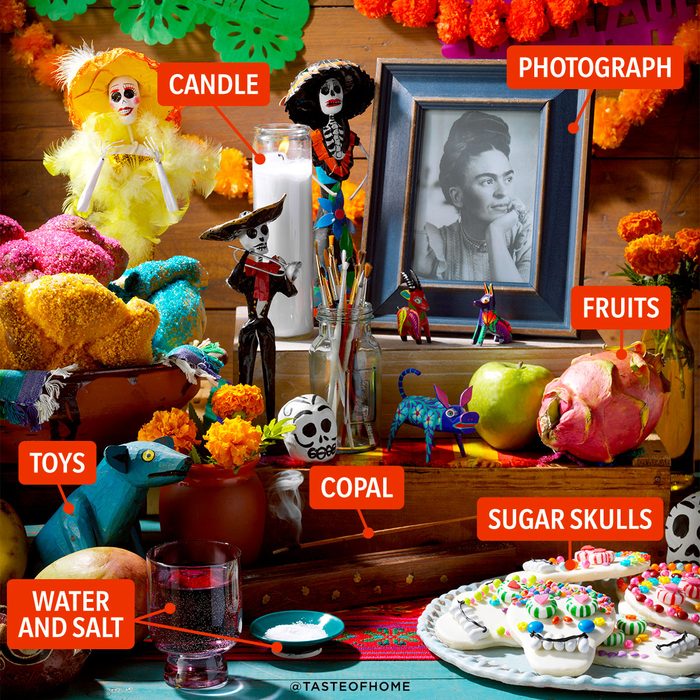
Building a Día de los Muertos ofrenda in your home is a beautiful way to remember and honor your loved ones who have passed. Now you can learn its significance and build one in your own home.
Every November 1 and 2, cemeteries all over Mexico come alive in celebration. Families meet at cemeteries and gather around tombstones to honor loved ones who have passed. Visitors serenade, dance, pray, light candles and decorate with vibrant orange and yellow cempasuchil flowers. Many choose to celebrate at home as well by building a beautiful Día de los Muertos ofrenda. The intention of ofrendas is to cherish and honor the lives and memories of loved ones who have passed away. In recent years, this tradition has become more popular in the United States.
What Is an Ofrenda?
An ofrenda, is an offering set up on an altar and is a fundamental element in the celebration of the Day of the Dead. It is believed that the spirits of the deceased return from the world of the dead to visit their families. The spirits of deceased children visit on November 1, and the spirits of deceased adults visit on November 2, thus consoling and comforting the living families for the loss.
An ofrenda invites the spirits of the dearly departed back home to feast on their favorite foods, libations and share a moment with the living. It is a beautiful way to reunite the deceased with their family through remembrance.
Tiers of an Ofrenda
Traditionally, an ofrenda is set up as a seven-level altar with various symbolic elements. Each level represents the steps that souls need to take in order to rest in peace. There are also two-level ofrendas that represent the earth and the sky or three-level ofrendas that represent the earth, the sky and purgatory.
When building a seven-level altar, each level must be lined with paper or cloth, alternating two colors. Here are how the levels are then arranged:
- Level 1 (the highest tier): This level bears the image of the devotional saint.
- Level 2: It is important to leave the second level empty, as it is dedicated to the souls in purgatory, and gives the deceased in purgatory permission to leave.
- Level 3: Salt is usually placed on level three. The tier where the soul is purified and protects the body from becoming corrupted in their journey to and from the afterlife.
- Level 4: This tier is for pan de muerto or bread of the dead. This delicious pastry symbolizes the Eucharist. It also represents the human sacrifices that were made in pre-Hispanic culture. Many display pan de muerto with chocolate de agua (water-based hot chocolate). Pre-Hispanic tradition states that guests drank the chocolate prepared with the same water that the soul used to wash itself, taking in the essence of the deceased.
- Level 5: This section is reserved for the deceased person’s favorite food and drink. Typically fruit, chicken mole with rice, beer, tequila and Mexican candies.
- Level 6: This is where photographs of the deceased are displayed. The altar can be dedicated to one person, a group of people or beloved pets who have passed.
- Level 7: This is the base layer of the altar. Here you can display crosses made out of natural items such as seeds, flower petals or fruit.
How to Make an Ofrenda
Setting up an ofrenda doesn’t need to be overly complicated. It can be assembled with items around your home. If space permits, it can be displayed indoors or outdoors and can be a small two-tier or larger seven-tier ofrenda. All you need are a few key elements.
Make a Structure
Using a table as the base, stack wooden crates or different-sized cardboard boxes to make different levels. Cover with a white cloth such as a tablecloth or white butcher paper. White signifies purity. Cover every other level with a different colored cloth or paper.
Make a Cempasuchil Arch
The cempasuchil or marigold flower is a Mexican icon. This orange or yellow flower is one of the most representative elements of the altar de muertos. Its name derives from the Nahuatl word Cempohualxochitl which means “twenty flowers” or “several flowers.”
The Cempasuchil flower is considered a Mexican symbol of life and death. When setting up your altar, thread some marigolds at the base with thread and create an arch to place over the top tier. It symbolizes the gateway of the dead to the world of the living. Be sure to get plenty of flowers. Fill gaps with single blooms or sprinkle those beautiful petals all over your altar.
Photographs
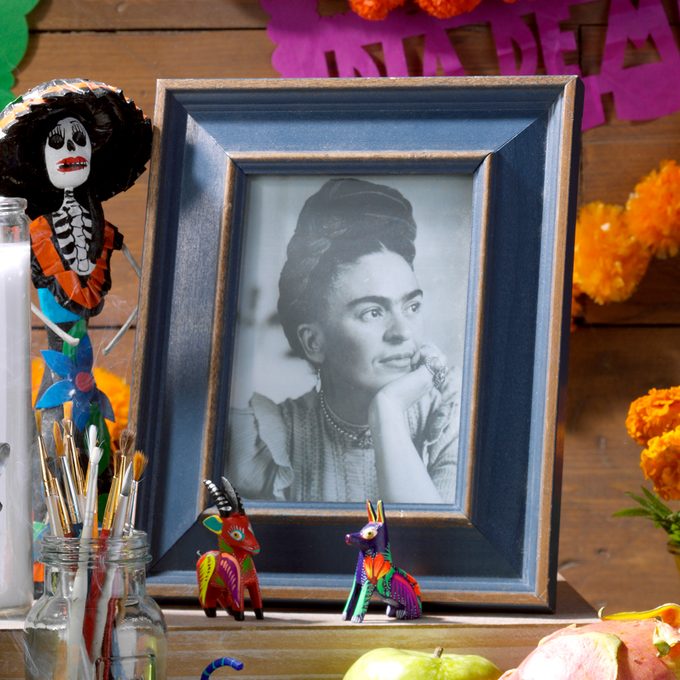
Photos of the deceased symbolize our expectations for their visit. In some traditions, their photograph is arranged hidden next to a mirror so that it can only be seen with the reflection. This insinuates that the deceased can be seen, but in reality, they are no longer with us.
Salt and Water
A cross of salt or salt in a small container is placed on some altars. Salt is a purifying element and protects the body from evil corruption throughout the journey of the deceased. A glass filled with water on the altar purifies the soul as well. It is also used to quench the thirst of the souls after their long journey.
Traditional Dishes and Fruit
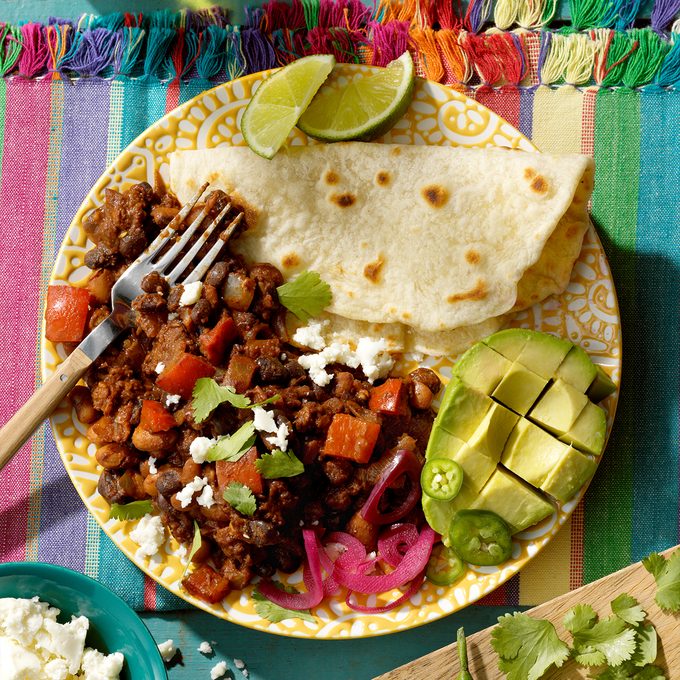
The objective of including food and drinks on a Day of the Dead ofrenda is to delight the visiting soul with their favorite dishes. They also signify the milestones, achievements and celebrations throughout their lives. Some popular dishes emblematic of Day of the Dead are black or red mole sauce over chicken or turkey and alcoholic beverages such as tequila and beer. You can also add fruit—red apples represent blood and candied pumpkin means kindness.
Skulls
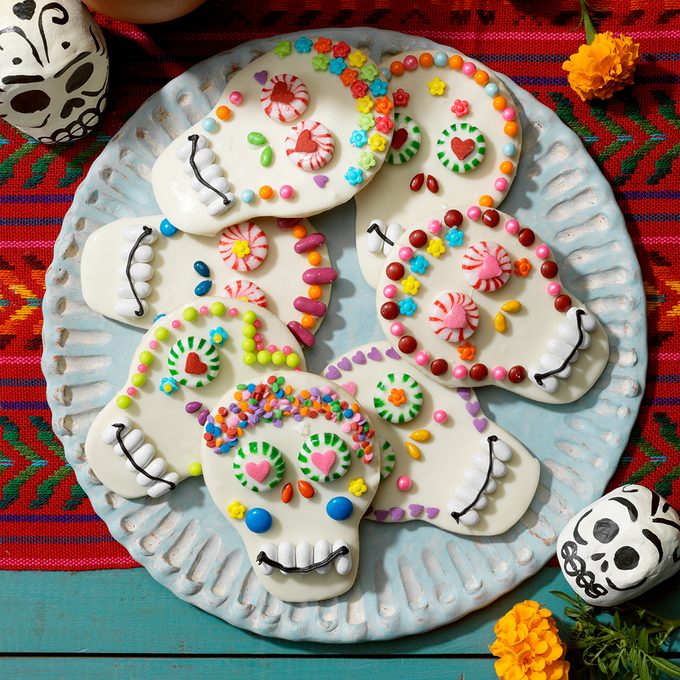
Arrange skulls made of sugar, chocolate, amaranth and nonedible materials such as clay or plaster all over the altar. They are a reminder of ever-present death and rebirth. Some sugar skulls are decorated in colorful frosting, foil and sequins, labeled with the deceased person’s name as a way to revive their spirit.
You can even make edible skulls from candies or cookies.
Candles and Copal
Candles signify light, faith and hope and guide the souls to their ancient place. There is no right or wrong amount of candles to place on an ofrenda.
Copal derives from the Nahuatl word copalli, meaning incense. Copal signifies prayer and praise. It is used to drive away evil spirits so that the soul can enter your home safely.
Pan de Muerto
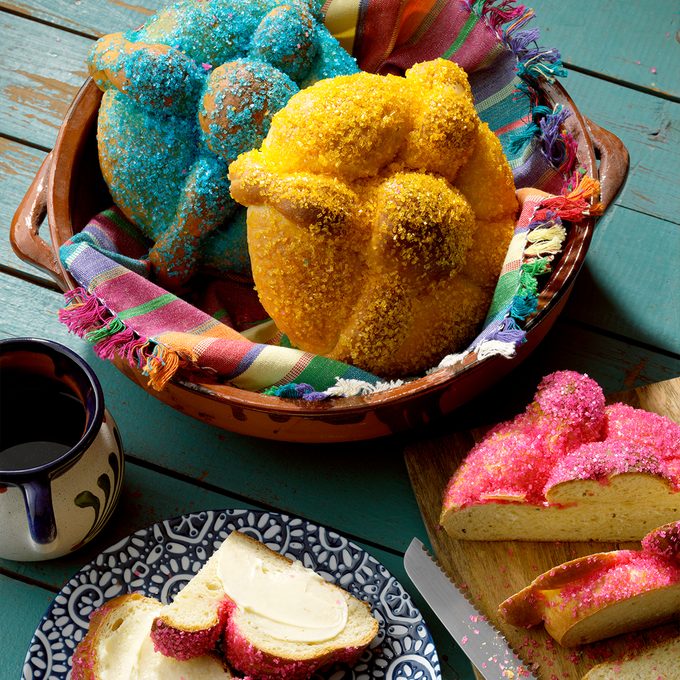
You’ll be able to find pan de muerto, or bread of the dead, in many sizes and shapes depending on the location, but the most popular and most commercial type is small and round. Its circular shape refers to the cycle of life that everyone goes through. The center “ball” symbolizes the skull of the deceased. The knobby strips represent the bones and tears of the deceased.
Papel Picado
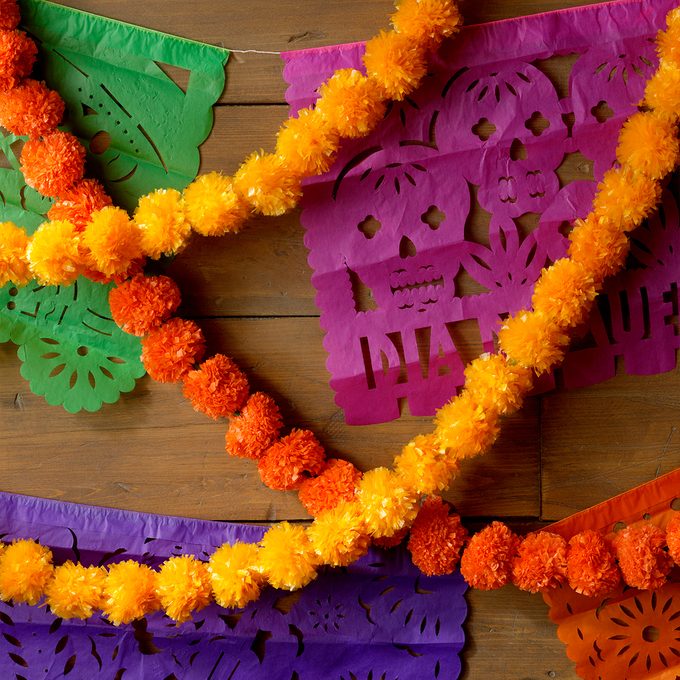
Papel picado, or perforated or pecked paper, is a delicate tissue paper banner with intricate designs that should always be present on your altar. It receives the souls of your deceased loved ones and signifies wind and joy for celebrating Día de Los Muertos.
When to Arrange Your Ofrenda
Although Dia de los Muertos is celebrated on November 1 and 2, ofrendas are traditionally arranged on October 27 to honor pets that have passed away. On October 28, souls who died tragically due to accidents or violence are honored. October 29, honors those who have drowned. October 30, honors lonely and forgotten souls without families. And October 31 honors children who died at birth or without having been baptized. The altar is customarily removed on November 3.
Tips for Arranging a Día de los Muertos Ofrenda
- If boxes or wooden crates are not available to you, use a fold-out table or a bookshelf.
- Clear out an area of your home with the least foot traffic such as a corner. High-traffic areas may lead to bumping into your altar or a breaking, spilling or burning accident.
- If you prefer to set up your altar a couple of weeks ahead, purchase plastic or tissue paper marigolds and make sure the food and water are either replaced regularly or displayed until the celebration.
- Opt for battery-operated candles rather than wax candles. They light up your altar beautifully and you don’t have to worry about placing them near other flammable decorations.
